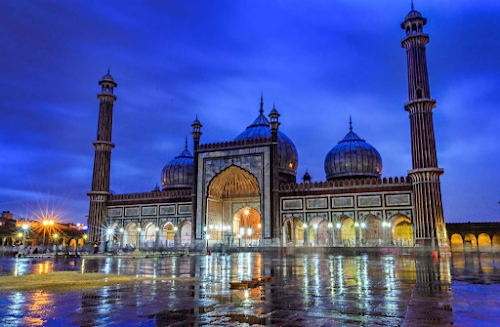
Jama Masjid
New Delhi, India
- Capture stunning photographs
- Climb the southern minaret for city views
- Explore the mosque's architecture
- Witness the Friday prayers
Known for:
Description:
Jama Masjid of Delhi, is one of the largest mosques in India. It is situated in Old Delhi and is a magnificent example of Mughal architecture. The mosque was built by Mughal Emperor Shah Jahan between 1644 and 1656. The courtyard of Jama Masjid can accommodate up to 25,000 people. The mosque has three great gates, four towers and two 40 m high minarets constructed of alternating vertical strips of red sandstone and white marble. The mosque has a stunning view of the city from the top of the southern minaret which is open for tourists to climb. Jama Masjid remains an active place of worship and a major tourist attraction of Delhi.
History:
Jama Masjid was built by Mughal emperor Shah Jahan, who also built the Taj Mahal and the Red Fort. Construction began in 1644 and was completed in 1656. Over 5,000 workers were involved in its construction. It was originally called Masjid-i-Jahan-Numa, meaning 'mosque commanding view of the world'. It served as the royal mosque during the Mughal period. After the decline of the Mughal empire, it came under the control of the British. Today, it is a major heritage site and tourist destination managed by the Delhi Waqf Board.